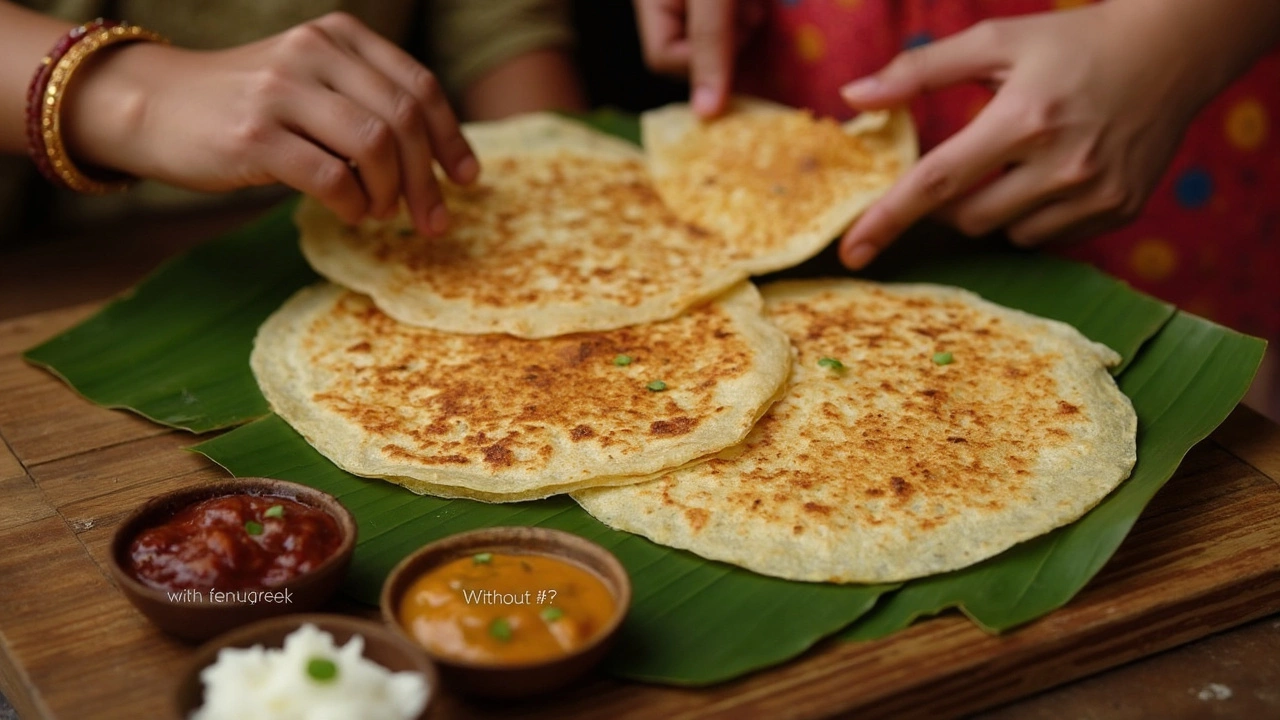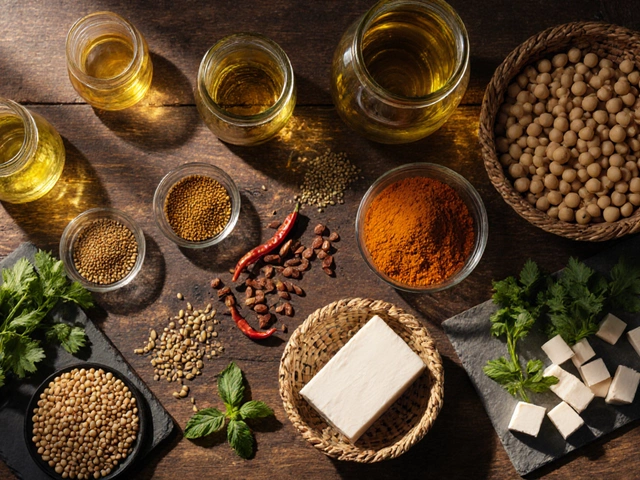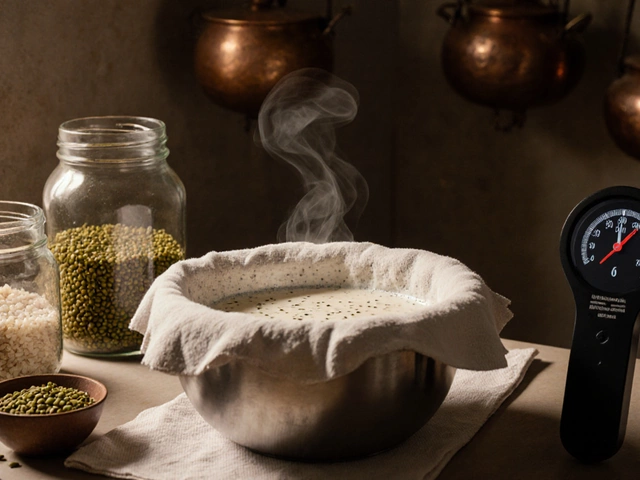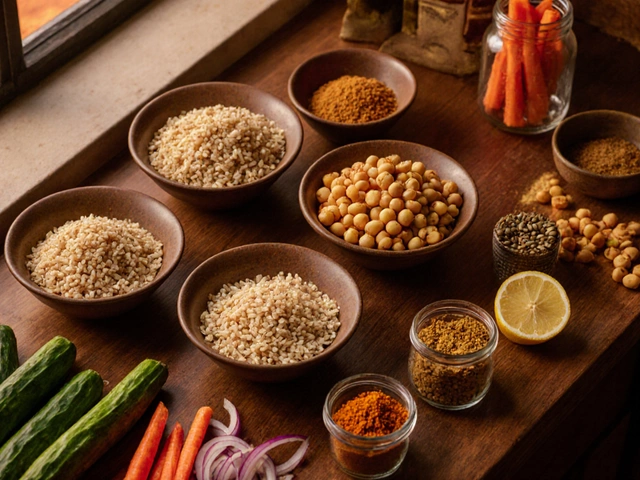Stuck without fenugreek but craving homemade dosas? You’re not doomed to a bland breakfast. Tons of people skip fenugreek for different reasons—maybe you ran out, maybe you just don’t enjoy that slightly bitter note. The good news? You can still make great dosas, and yes, they’ll be crispy.
Fenugreek gives dosa batter that bubbly fermentation and a mild flavor kick, but it’s not the only player on the team. Plenty of families in South India make dosa without it, especially for people who are sensitive to its taste. All you need to do is understand what fenugreek does—mainly helping with fermenting and adding a hint of aroma—so you can play with the batter and make it work for you.
- Why Fenugreek Is Used in Dosa Batter
- Can You Skip Fenugreek Completely?
- Flavor and Texture: What Changes Without Fenugreek?
- Simple Swaps: What to Use Instead
- How to Adjust Your Recipe for Better Dosas
- Pro Tips for Crispy Dosas Without Fenugreek
Why Fenugreek Is Used in Dosa Batter
So, what’s the big deal about fenugreek in dosa batter? If you’ve ever wondered why plenty of authentic recipes call for these tiny seeds, it comes down to three main things: fermentation, flavor, and texture.
Fenugreek seeds are famous for helping the batter ferment better. The natural sugars and compounds in the seeds are like a snack for the good bacteria that make your batter bubbly and tangy. That’s why you get super light, airy dosas that are full of life instead of flat and dense pancakes. Ever noticed how some families get perfect results even in winter? Many swear it’s because of that small spoonful of fenugreek.
The flavor is another reason. Fenugreek adds a subtle earthy taste—not overwhelming, just enough to balance out the rice and lentils. Some say it leaves a faint, sweet aroma, which separates a classic dosa from a plain rice pancake.
These little seeds even help make your dosa crunchy on the outside but soft inside. The bit of natural mucilage in fenugreek forms a gel-like texture when soaked, which adds structure to the batter. That could be why your dosa batter always cooks up just right at restaurants.
Here’s a quick look at what fenugreek does in dosa batter versus what happens without it:
| With Fenugreek | Without Fenugreek |
|---|---|
| Batter ferments faster and is fluffier | Fermentation takes longer, sometimes less rise |
| Mild earthy and sweet aroma | More plain, almost just rice/lentil taste |
| Dosas are crisp but flexible | Sometimes less crisp, occasional tearing |
| Batter is silkier, pours better | Batter may be thicker, can stick to pan |
If you ever wondered why only a pinch of fenugreek goes such a long way, now you know. It’s not just about taste—it’s about getting the texture and rise just right.
Can You Skip Fenugreek Completely?
If you’re eyeing that container of urad dal and rice but realize there’s not a fenugreek seed in the kitchen, don’t worry—you can absolutely make dosa batter without it. Years ago, most families always tossed in a spoonful of fenugreek, but not everyone does today. It isn’t a must for the batter to come together or ferment.
Fenugreek offers two things: it helps fermentation get going faster, and it gives that earthy, slightly bitter taste that some people love in dosa. But if you skip it, the world doesn’t end. Plenty of home cooks and even some popular South Indian restaurants leave it out. The main thing you might notice is less of that unique aroma and sometimes minor changes to the golden color.
To get technical, dosas will still ferment well if you live somewhere warm. The wild yeast on your rice and dal can do the job if you give them some time. In cooler places, fermentation might be a bit slower, but you can still get there—it might just take a few more hours. Here’s what to expect if you leave fenugreek out:
| Aspect | With Fenugreek | Without Fenugreek |
|---|---|---|
| Fermentation Speed | Typically 8–12 hours | May need 10–16 hours, especially in cold weather |
| Taste | Slightly bitter, more complex | Milder, cleaner flavor |
| Texture | Helps batter stay soft and creamy | Tiny bit less soft, but still lacy and crispy if done right |
Still worried about fermentation? You can cover the bowl with a warm cloth or pop the batter into your oven with just the light on—no special gadgets needed. So, yes, you can really skip fenugreek and still get those golden, crispy dosas. It just means your batter might need a little more patience and care.

Flavor and Texture: What Changes Without Fenugreek?
So what actually happens if you leave fenugreek out of your dosa batter? The first thing you’ll notice is about the batter’s behavior. Fenugreek seeds help your batter foam up nicely during fermentation. Without them, sometimes the batter seems just a bit less airy, and that can make your dosas slightly less crisp.
Flavor-wise, fenugreek adds a mild bitterness and nutty aroma. When you skip it, your dosa tastes a little milder and cleaner—closer to the flavors of rice and urad dal alone. Some people actually prefer this, especially kids or anyone sensitive to bitter notes.
There’s another detail: fenugreek has natural compounds that help prevent your batter from going sour too fast. Without it, you’ll want to keep an eye on the batter if your kitchen is warm, and maybe stick to a shorter fermentation time.
The color changes slightly too. Fenugreek tends to give dosas a hint of golden hue and softness. No fenugreek means slightly whiter dosas and sometimes a thin, more brittle edge—great if you love extra crunchy dosas.
If you’re after that classic street-side dosa taste, fenugreek does help, but honestly, you’ll still get tasty results without it. The biggest game-changer is texture: expect crisp edges, a slightly drier bite, and a straightforward flavor. Perfect if you like to pack your dosas with spicy fillings or serve them with punchy chutneys.
How to Adjust Your Recipe for Better Dosas
If you’re making dosa batter without fenugreek, a few simple tweaks can keep things fluffy and crisp, instead of flat and sad. Fermentation is the secret sauce, so let’s make sure you nail that first.
- Soak Time: Let your rice and dal soak for at least 6 hours. The longer soak helps break them down and makes up for the missing fenugreek.
- Increase Urad Dal: You can boost urad dal by 1-2 extra tablespoons in your usual ratio. More protein helps with batter structure and fermentation.
- Don’t Rush the Ferment: Keep your batter in a warm spot (around 30–35°C or about 86–95°F) for 8 to 12 hours. If it’s chilly, wrap the bowl in a towel, stick it in your oven with just the light on, or set it near your stove.
- Add Rice Flakes (Poha): Toss in 2 to 4 tablespoons of poha per cup of rice before soaking. Poha helps the batter ferment faster and makes dosas lighter.
- Mix Well: After grinding, whisk your dosa batter well to introduce air and help with fermentation.
The table below gives some quick numbers at a glance. It's a no-fenugreek checklist for popular batter batches:
| Ingredient | Standard Ratio | Adjusted Ratio (No Fenugreek) |
|---|---|---|
| Rice | 3 cups | 3 cups |
| Urad Dal | 1 cup | 1 1/8 to 1 1/4 cups |
| Fenugreek Seeds | 1–2 tsp | 0 |
| Poha (Flattened Rice) | 0 | 1/4 cup |
If you’re really struggling to ferment (especially in winter), sprinkle in a pinch of sugar or a spoonful of leftover cooked rice to help the good bacteria. And don’t be afraid to experiment—dosas are forgiving once you get the hang of the batter game!

Pro Tips for Crispy Dosas Without Fenugreek
Getting that perfect, crispy dosa without fenugreek isn’t some mystical kitchen magic. It just means tweaking your method a little and knowing exactly what matters for the batter. Here’s how to keep those dosas just as satisfying—and maybe even better—than the usual batch.
- Soak Grains Well: Give your rice and urad dal a good soak—at least 6 to 8 hours, or overnight if you can. This softens everything up for a smooth blend and better fermentation, which is key for texture.
- Blend to the Right Consistency: Don’t leave your batter too coarse. After soaking, blend until you get a light, slightly grainy (not chunky) batter. If it’s too thick, add a bit of water.
- Salt at the Right Time: Add salt after fermenting. Salt slows down fermentation, especially if you’re not using fenugreek, and can keep the batter from bubbling up as well as you want.
- Warm Spot for Fermenting: Batter loves warmth. Leave it in a switched-off oven, wrapped in a towel, or near your stove overnight. If it’s cold, put your bowl in a big pot of warm water—the yeast and bacteria will thank you.
- Extra Crunch: Try adding a spoonful of flattened rice (poha) to your batter while soaking. This gives you a boost in crispiness, even without fenugreek.
- Right Pan and Heat: Preheat your pan really well. Sprinkle a little water—the sizzle means it’s ready. Always wipe the pan before pouring each dosa for even browning.
Some people even toss in a handful of cooked rice when blending the batter. This helps with both softness and crispiness—kind of like cheating, except it’s tradition in plenty of homes.
Here’s a quick table with real kitchen tips to help you spot where you might go wrong, or how to go that extra mile:
| Step | What Helps Crispiness |
|---|---|
| Soaking | Soak longer for softer grains; easier to ferment |
| Ingredient Swap | Use poha or cooked rice to make up for missing fenugreek |
| Fermentation | Warm room speeds up process, better batter bubbles |
| Pan Prep | Hot, clean pan makes sure dosa doesn’t stick or turn soggy |
One last tip: resist the urge to flip your dosa. Let it cook thoroughly on one side for that golden crispness. Once you spread it thin, hands off—just watch the edges pull away, then fold and serve straight off the pan.
So yes, with these tricks, your dosa batter will still turn out restaurant-worthy, even when you’re fresh out of fenugreek.
- Poplular Tags
- dosa batter
- fenugreek substitute
- dosa recipe
- no fenugreek dosa
- dosa tips











